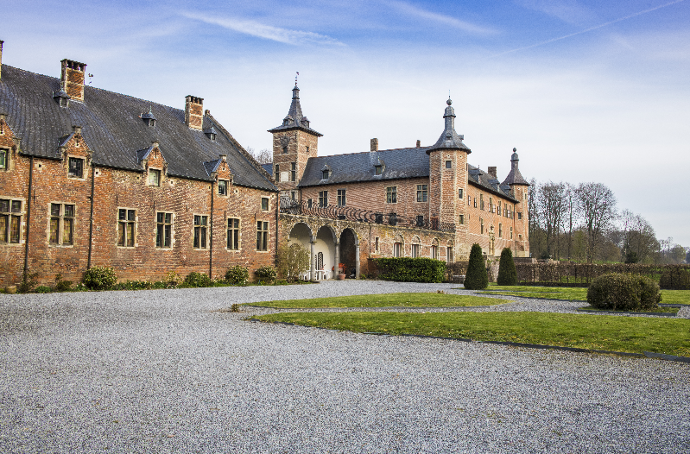ABBEYPARK OF AYWIERS
À Lasne, niché dans un écrin de verdure, l’ancienne Abbaye d’Aywiers se dresse au sein d’un domaine de 7 hectares entouré de hauts murs. Convertie en château, elle appartient aujourd’hui à la famille Limauge, qui en assure avec passion la préservation.
PRESENTATION
Fondée en 1215, l’Abbaye d’Aywiers fut un centre spirituel et économique prospère, soutenu par les seigneurs de Bruxelles. Elle s’étendait sur environ 2000 hectares et possédait fermes, moulins, et charbonnages. Parmi ses figures majeures, on retient sainte Lutgarde de Tongres, grande mystique médiévale, qui y aurait accompli de nombreux miracles. L’abbaye fut reconstruite à trois reprises, mais subit le sort d’autres établissements religieux : supprimée à la Révolution française en 1796, elle fut en grande partie démolie au 19ième siècle. Aujourd’hui, plusieurs bâtiments historiques subsistent, dont le portail Sainte-Lutgarde, les anciennes portes d’En-Bas et d’En-Haut, le pavillon Renaissance, et les dépendances. Le parc paysager à l’anglaise abrite des arbres centenaires majestueux – chênes, hêtres, tilleuls – un étang, des sources naturelles et un jardin de plantes aromatiques et médicinales.
RIXENSART CASTLE
Perched on a hill overlooking the Lasne Valley, Rixensart Castle is a magnificent architectural gem, recognised as an exceptional heritage site in Wallonia. The Merode family has owned it since 1715. Created in 2018, the Merode-Rixensart Foundation is dedicated to preserving this rich heritage.
PRESENTATION
First mentioned in 1217, the Rixensart estate originally belonged to the de Limal family. In the 16th century, it passed to the Croÿ family and, in 1586, to Jean-Charles de Gavre, Count of Frésin, who expanded the medieval fortress. At the end of the 17th century, the château was partially destroyed by the troops of Louis XIV. It was rebuilt and enhanced by General Philippe-Hippolyte Spinola, serving the King of Spain, who gave it its current appearance.
Since 1715, the estate has remained in the hands of the Merode family, who continue its preservation today.
Built around an elegant inner courtyard, the château blends Renaissance and Baroque styles with Genoa, Spain, and Brabant influences. The Sainte-Croix Church, built on its foundations, replaced the medieval tower, destroyed in the fire. Once a private chapel, it became a parish church in 1802.







